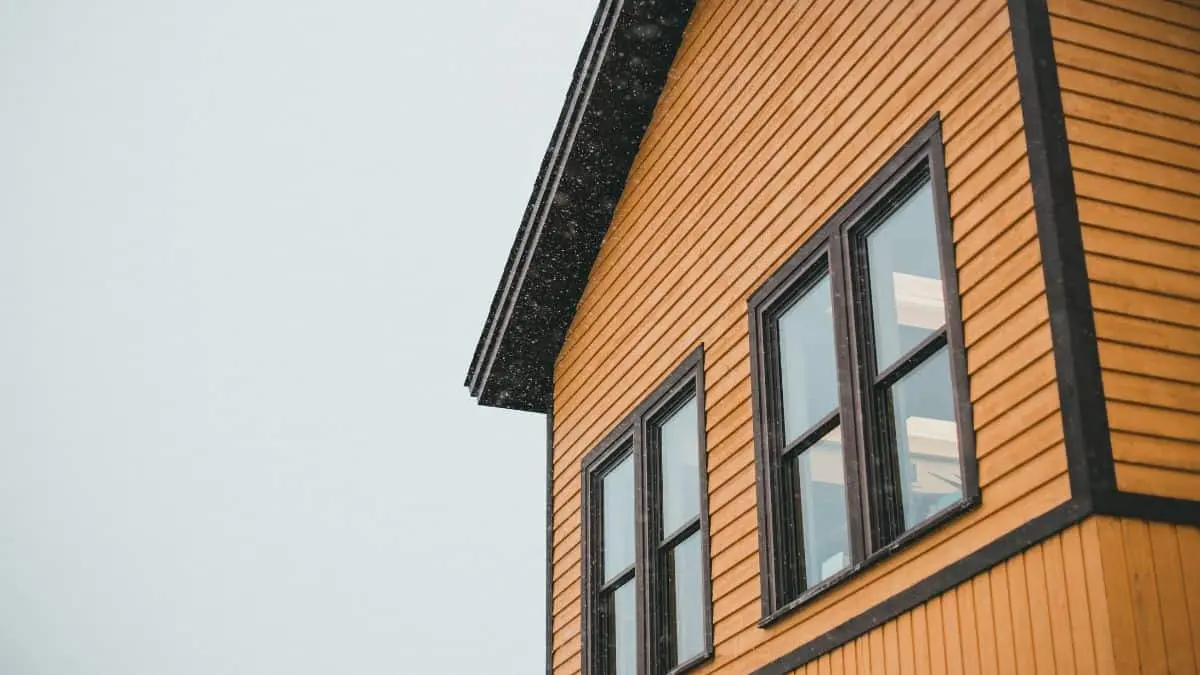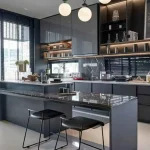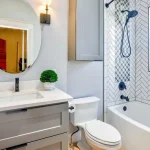Are you thinking about giving your home’s exterior a fresh new look but wondering if T1-11 siding is still the best option? You’re not alone. T1-11 siding has been a popular choice for many homeowners over the years, thanks to its affordability and versatility.
However, as with any home improvement material, there are pros and cons to consider, and many homeowners are now exploring alternative siding options that offer better durability, modern aesthetics, and easier maintenance.
In this post, we’ll dive into the details of T1-11 siding, explore its advantages and drawbacks, and then take a closer look at some of the best alternatives on the market today.
Whether you’re in the middle of a renovation or just planning ahead, this guide will help you make an informed decision about the best siding choice for your home.
Understanding T1-11 Siding

What is T1-11 Siding?
T1-11 siding, often referred to simply as “T1-11,” is a type of plywood or OSB (Oriented Strand Board) siding that gained popularity in the 1960s and 70s. Known for its distinct vertical grooves and textured surface, T1-11 gives homes a rustic, wood-like appearance. It’s available in two main types:
- Plywood T1-11: Made from multiple layers of wood veneer, plywood T1-11 is generally considered more durable and water-resistant than its OSB counterpart.
- OSB T1-11: This version is made from wood strands that are bonded together with resin. While it’s often cheaper, OSB T1-11 can be more susceptible to moisture damage if not properly maintained.
Pros of T1-11 Siding
Affordability: One of the main reasons homeowners have turned to T1-11 siding over the years is its cost-effectiveness. Compared to many other siding options, T1-11 is relatively inexpensive, making it an attractive choice for budget-conscious projects.
Versatility: T1-11’s natural wood appearance allows it to blend well with a variety of home styles, from rustic cabins to suburban homes. It can also be painted or stained to match your preferred color scheme, giving you plenty of design flexibility.
Easy Installation: If you’re a DIY enthusiast, you’ll appreciate that T1-11 siding is relatively easy to install. Its large panels cover more surface area quickly, and with the right tools and some basic carpentry skills, you can handle the installation yourself.
Cons of T1-11 Siding
Maintenance Requirements: While T1-11 siding is affordable upfront, it does require regular maintenance to keep it looking good and functioning well. To protect it from moisture damage, it needs to be properly sealed, painted, or stained every few years. Neglecting this maintenance can lead to issues like rot, warping, and mold growth.
Durability Concerns: T1-11 siding is particularly vulnerable to moisture, especially if not adequately maintained. Water can seep into the grooves and edges, leading to rot and decay over time. Additionally, T1-11 is prone to insect infestations, which can further compromise its longevity.
Aesthetic Limitations: Although T1-11 offers a natural wood look, its appearance can seem dated compared to more modern siding options. Homeowners looking for a sleek, contemporary design might find T1-11 less appealing, especially if they’re aiming for a high-end or modern aesthetic.
Alternative Siding Options
As you explore options beyond T1-11 siding, you’ll find a variety of siding materials that cater to different tastes, budgets, and climates. Let’s take a closer look at some of the top alternatives and weigh their benefits and drawbacks.
Vinyl Siding
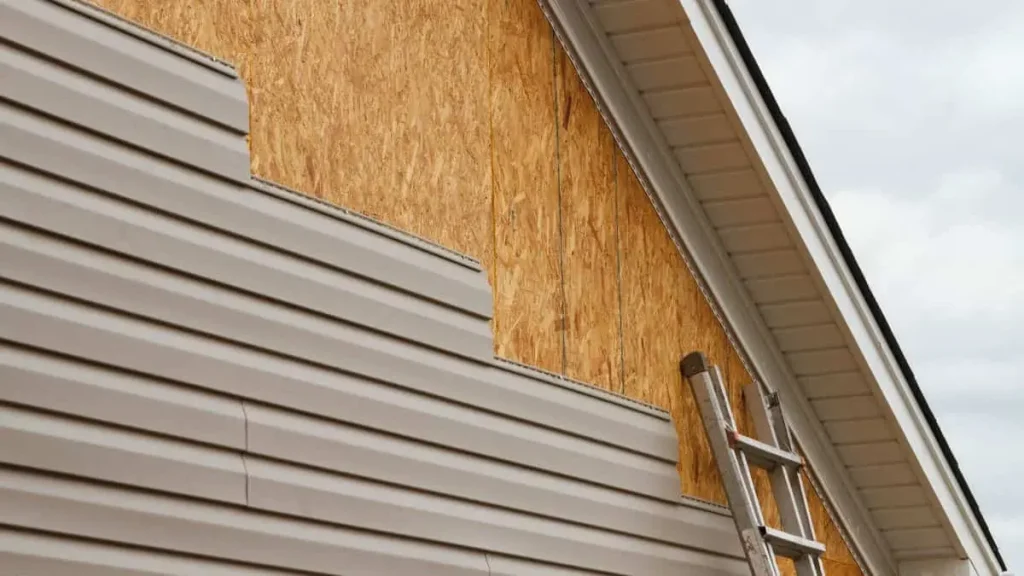
Benefits: Vinyl siding is one of the most popular siding options today, and for good reason. It’s low-maintenance, requiring only an occasional wash to keep it looking fresh. With a wide range of styles, colors, and textures, vinyl can mimic the look of wood or come in sleek, modern finishes. Plus, it’s generally affordable, making it a favorite among homeowners.
Drawbacks: While vinyl siding is durable, it can crack in extreme temperatures and may fade over time, losing its vibrant color. Additionally, some eco-conscious homeowners might find it less appealing, as traditional vinyl production isn’t the most environmentally friendly.
Fiber Cement Siding
Benefits: If you’re looking for a long-lasting and low-maintenance option, fiber cement siding is a fantastic choice. It’s highly durable, fire-resistant, and can mimic the look of wood or stone. Homeowners love that it stands up well against moisture, pests, and rot, making it a reliable investment.
Drawbacks: However, fiber cement is heavier than other materials, which can make installation a bit more challenging. Additionally, it tends to be pricier upfront compared to T1-11 and other siding options.
Engineered Wood Siding

Benefits: Engineered wood siding combines the beauty of natural wood with improved durability. It’s treated to resist moisture, insects, and decay, giving you the aesthetic appeal of wood without the same level of maintenance. Homeowners appreciate its easy installation and the variety of styles available.
Drawbacks: While engineered wood offers a great balance, it still requires some maintenance over time, including periodic painting or staining. It’s typically more expensive than T1-11, which could be a consideration if you’re on a tight budget.
Metal Siding
Benefits: Metal siding, including options like aluminum and steel, is gaining popularity for its modern aesthetic and extreme durability. It’s fire-resistant, doesn’t rot, and is often made from recycled materials, making it an eco-friendly choice. Plus, it can be painted in various colors for a personalized look.
Drawbacks: One downside is that metal siding can be noisy during rain or hailstorms. It may also dent, which could detract from its sleek appearance. Additionally, the initial costs can be higher than wood-based options.
Stucco Siding
Benefits: Stucco siding offers a unique and stylish appearance, especially in warmer climates. It provides excellent insulation and energy efficiency, keeping your home comfortable year-round. Plus, it’s low maintenance and can last for decades if properly cared for.
Drawbacks: On the flip side, stucco isn’t ideal for all climates. In areas with heavy rainfall, it can crack or absorb moisture if not installed correctly. Additionally, the installation process can be more expensive than T1-11.
Brick and Stone Veneer
Benefits: For a timeless, classic look, brick and stone veneer siding is hard to beat. It offers exceptional durability, low maintenance, and excellent insulation. Homeowners love its aesthetic appeal, which can boost curb appeal and property value.
Drawbacks: However, brick and stone veneer comes with a high price tag, both for materials and installation. It’s also much heavier than other options, which may require additional structural support.
Composite Siding
Benefits: Composite siding is made from a blend of materials, typically wood fibers and resin, providing a variety of styles and finishes. It’s low maintenance and resistant to warping and insect damage, making it a solid option for many homeowners.
Drawbacks: While composite siding can offer great durability, it usually comes at a higher cost than T1-11 and may not have as long of a track record in terms of longevity.
Wood Siding (Cedar, Pine, etc.)
Benefits: For those who love the look of natural wood, traditional wood siding options like cedar and pine are excellent choices. They offer warmth, beauty, and versatility in finishes, allowing for a personalized touch.
Drawbacks: However, wood siding requires regular maintenance to prevent rot and insect damage. It can also be pricier than T1-11, depending on the type of wood chosen.
Cost Comparisons
When considering siding options, it’s essential to factor in both the initial costs and long-term expenses. Here’s a breakdown of the financial aspects of various siding alternatives compared to T1-11 siding.
Initial Costs
- T1-11 Siding: Typically ranges from $1.50 to $3.00 per square foot for materials, making it one of the most affordable options upfront.
- Vinyl Siding: Costs about $2.00 to $7.00 per square foot, depending on quality and style.
- Fiber Cement Siding: Generally ranges from $5.00 to $10.00 per square foot, reflecting its durability and aesthetic appeal.
- Engineered Wood Siding: Prices usually fall between $3.00 and $7.00 per square foot, making it a mid-range option.
- Metal Siding: Costs can vary widely, typically ranging from $3.50 to $10.00 per square foot, depending on the type and finish.
- Stucco Siding: Installation and material costs can range from $6.00 to $9.00 per square foot, reflecting its unique application process.
- Brick and Stone Veneer: This premium option can cost anywhere from $10.00 to $20.00 per square foot due to its durability and classic appeal.
- Composite Siding: Usually ranges from $5.00 to $10.00 per square foot, providing a balance of quality and cost.
- Wood Siding: Costs can range from $4.00 to $10.00 per square foot, depending on the type of wood used.
Long-Term Costs
While initial costs are crucial, long-term expenses can significantly impact your budget. Here’s what to consider:
- Maintenance: T1-11 siding requires regular sealing and painting, which can add up over the years. Alternatives like vinyl and metal often require less upkeep, potentially saving you money in the long run.
- Repairs and Replacements: Materials like fiber cement and brick tend to have lower long-term repair costs due to their durability, while wood and T1-11 may need more frequent repairs.
Value for Money
Ultimately, the best siding choice for your home isn’t solely about upfront costs. Consider the value for money, which includes longevity, maintenance needs, and potential increases in property value. Investing in higher-quality materials like fiber cement or brick may yield better returns, especially when it comes time to sell your home.
Installation Tips
When it comes to installing new siding, a successful project can hinge on careful planning and execution. Here are some essential tips to help you navigate the installation process, regardless of the siding option you choose:
Prepare Your Home
Before starting any installation, ensure your home is ready. This includes:
- Inspection: Check for any damage to existing siding, walls, or insulation that may need to be addressed first.
- Clean Surface: Remove dirt, mold, and debris from the area where you’ll be installing the new siding.
- Weather Considerations: Plan your installation during a time of year with favorable weather conditions to avoid complications with moisture or extreme temperatures.
Gather the Right Tools
Having the right tools on hand can make the installation process smoother. Depending on the siding material, you may need:
- Basic Tools: Hammer, nails, level, tape measure, and square.
- Power Tools: A circular saw for cutting siding panels, a nail gun for quicker installation, and a drill for any additional fastening.
- Safety Gear: Don’t forget safety glasses, gloves, and a dust mask to protect yourself during the installation.
Recommended For You: T1 11 Siding Installed Horizontally: Enhancing Curb Appeal
Follow Manufacturer Instructions
Every siding material comes with specific installation guidelines. Make sure to:
- Read the Manual: Familiarize yourself with the manufacturer’s recommendations for your chosen siding. This will include installation techniques, spacing, and necessary materials.
- Check Local Building Codes: Ensure your installation complies with local regulations, which may dictate specific materials, installation techniques, or permits.
Consider Professional Help
While many homeowners opt for a DIY approach, it’s essential to assess your skills and comfort level. If you’re not confident in your abilities, or if the project is particularly large or complex, hiring a professional can save you time, effort, and potential costly mistakes. Look for local contractors with good reviews and a portfolio of completed projects.
Eco-Friendly and Modern Design Considerations
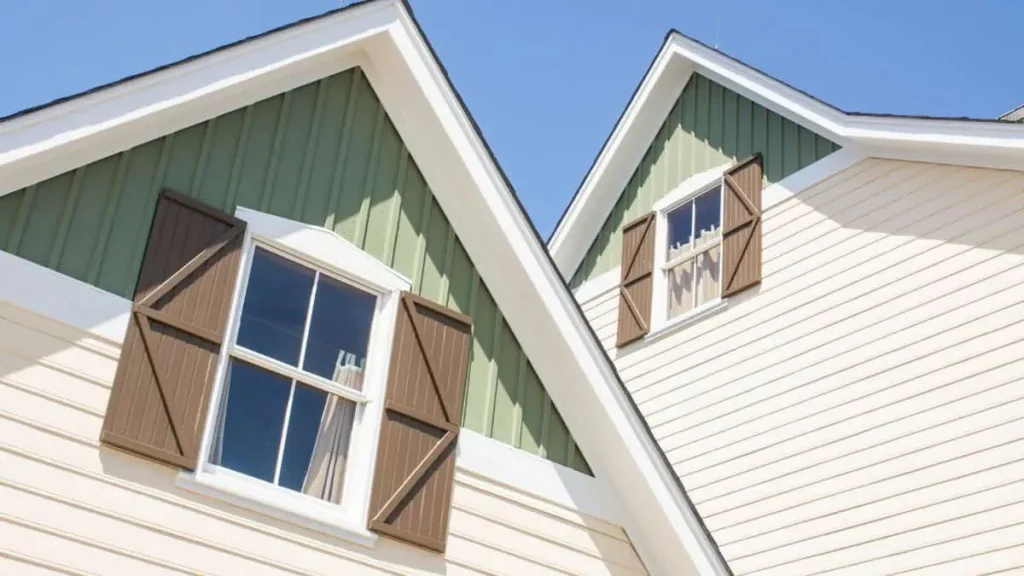
As more homeowners prioritize sustainability and contemporary aesthetics, it’s crucial to consider eco-friendly options and modern design trends when choosing siding.
Eco-Friendly Siding Options
If sustainability is a key concern for you, consider the following eco-friendly siding alternatives:
- Fiber Cement Siding: Made from recycled materials, fiber cement siding is both durable and low-maintenance, reducing the need for frequent replacements.
- Wood Siding (from Sustainably Managed Forests): Opt for wood siding sourced from sustainably managed forests. This ensures that your choice has minimal environmental impact.
- Recycled Metal Siding: Metal siding made from recycled materials not only looks modern but also minimizes waste.
Energy Efficiency
Many siding options offer enhanced energy efficiency, which can lead to lower utility bills and a reduced carbon footprint. Look for materials that provide good insulation and consider adding insulation boards during installation for improved energy performance.
Modern Design Trends
Incorporating modern design elements can elevate the appearance of your home. Here are some trends to consider:
- Bold Colors: Homeowners are increasingly opting for bolder, more vibrant colors for siding to create a striking visual impact. Consider using a combination of colors for an eye-catching look.
- Mixing Materials: Don’t hesitate to mix and match siding materials to create depth and texture. For example, pairing wood siding with metal accents can give your home a contemporary feel.
- Textures and Patterns: Explore siding options with unique textures or patterns that add visual interest. Whether it’s the clean lines of modern metal or the rustic charm of wood, there are endless possibilities to explore.
Conclusion
Choosing the right siding for your home is a significant decision that can affect not only your home’s curb appeal but also its long-term performance and maintenance needs. While T1-11 siding has served many homeowners well over the years, exploring the many t1-11 siding alternatives available today can lead you to a solution that better fits your style, budget, and environmental values.

